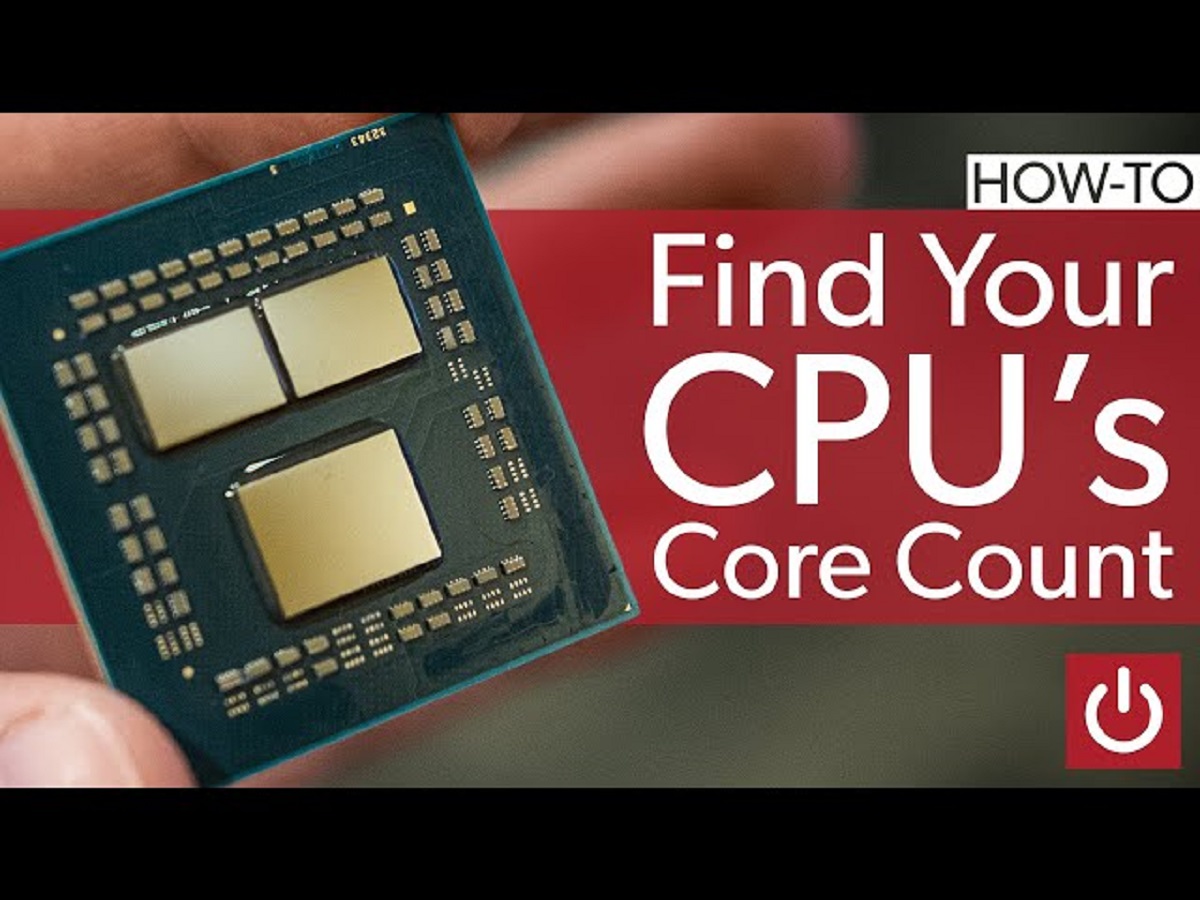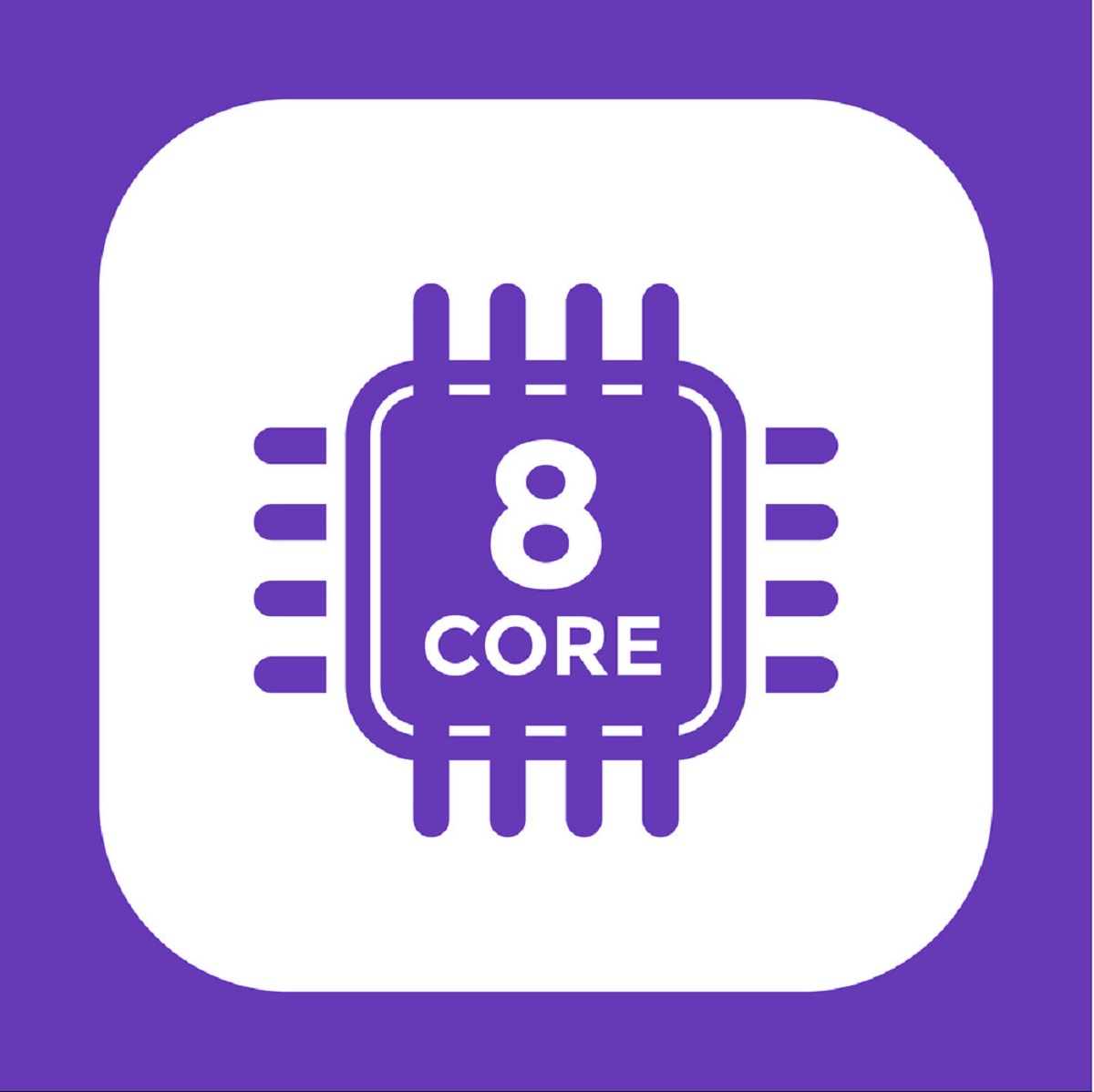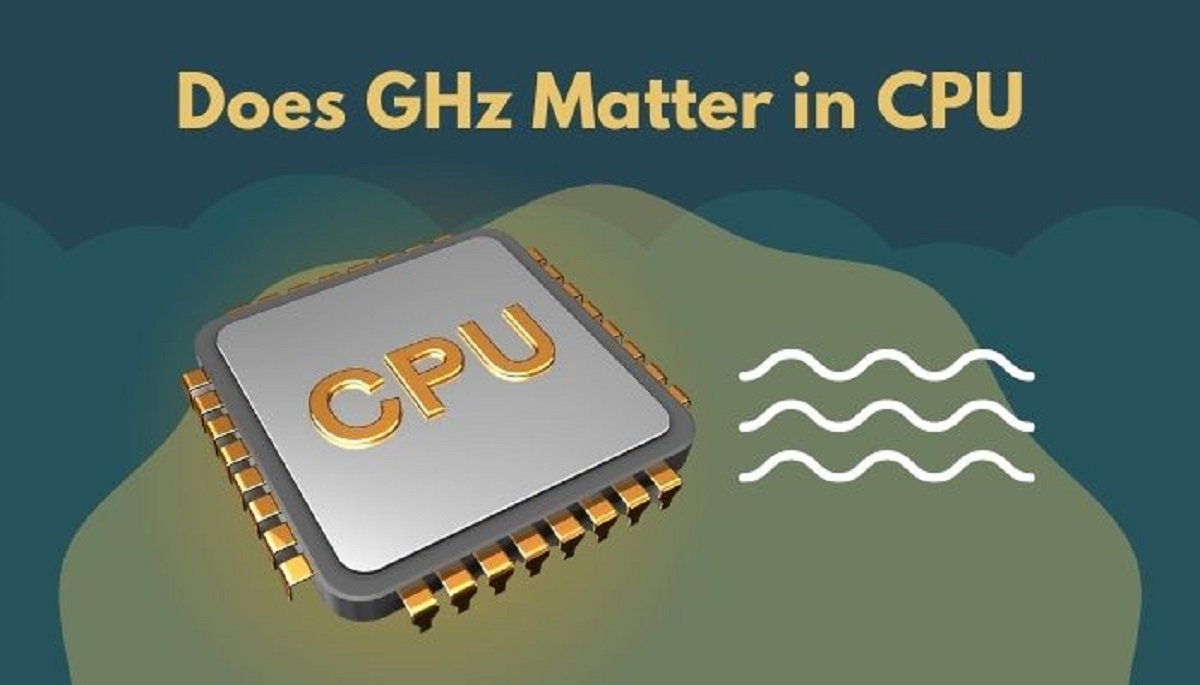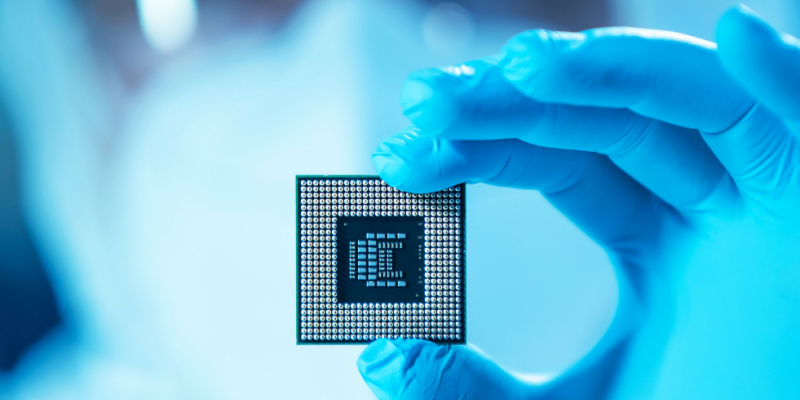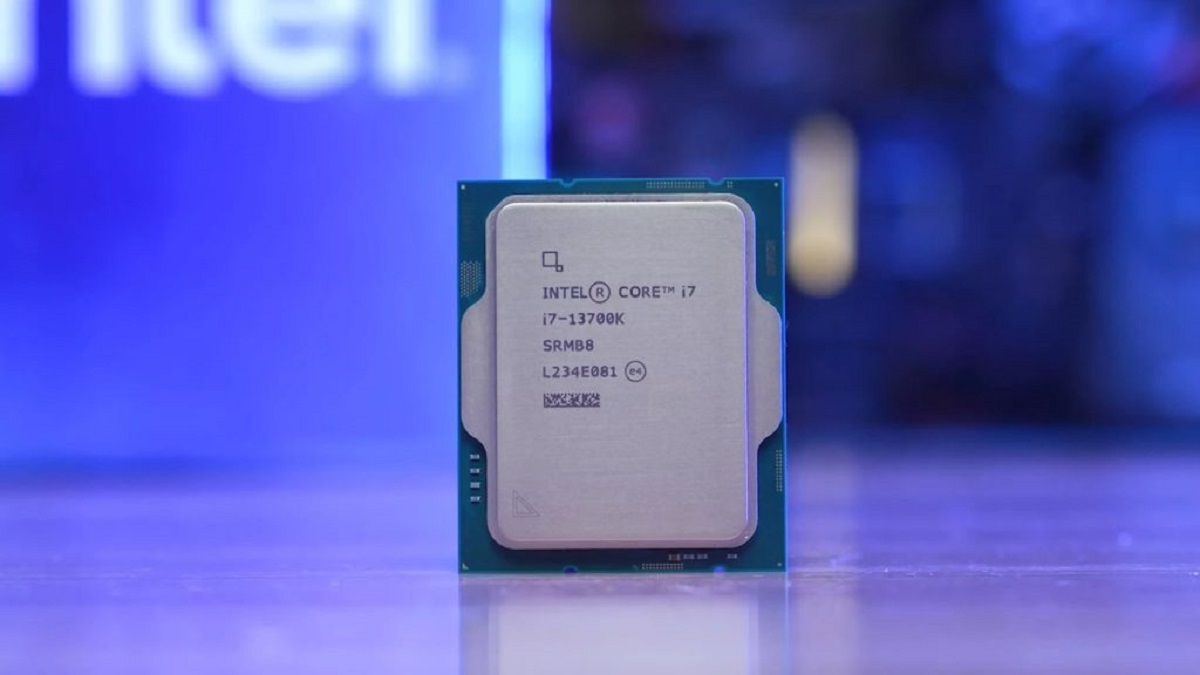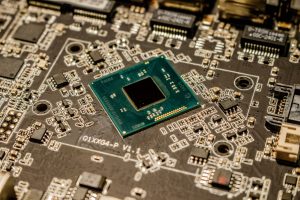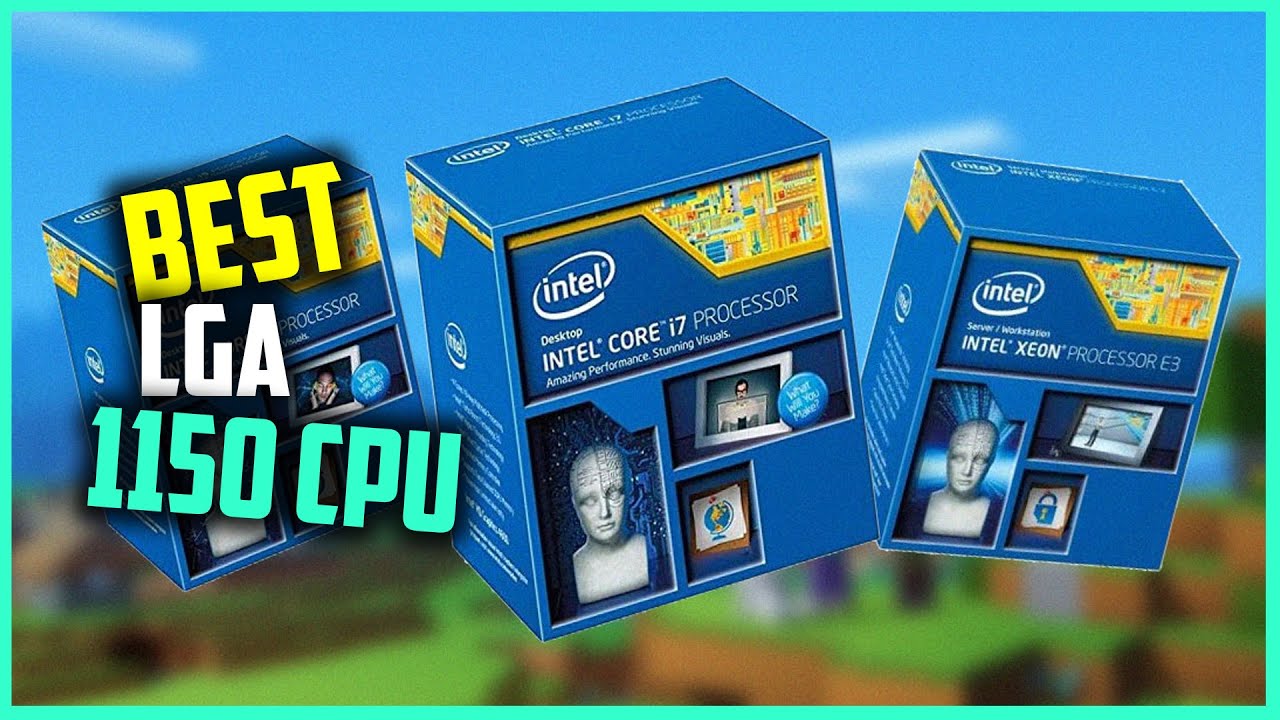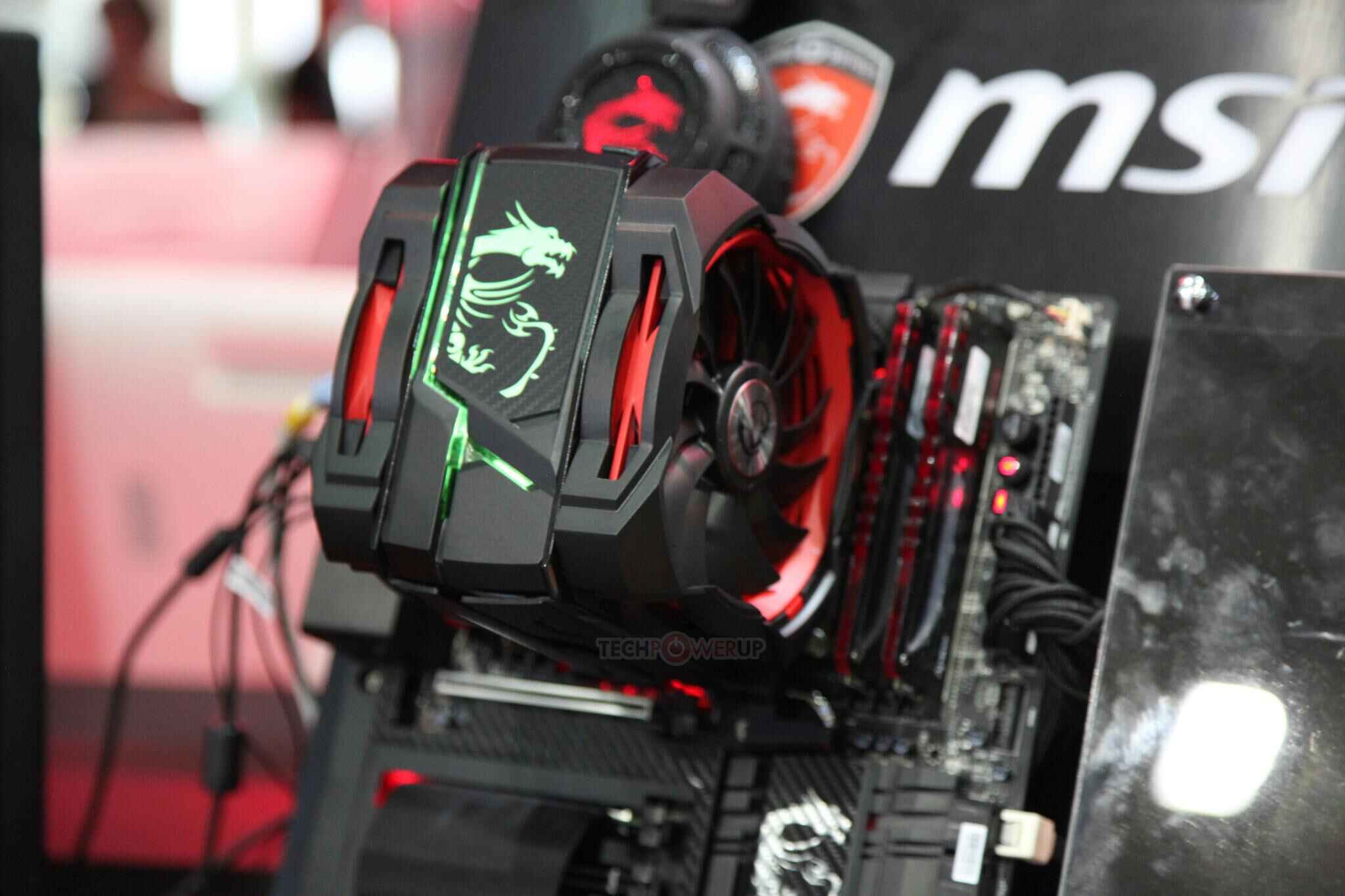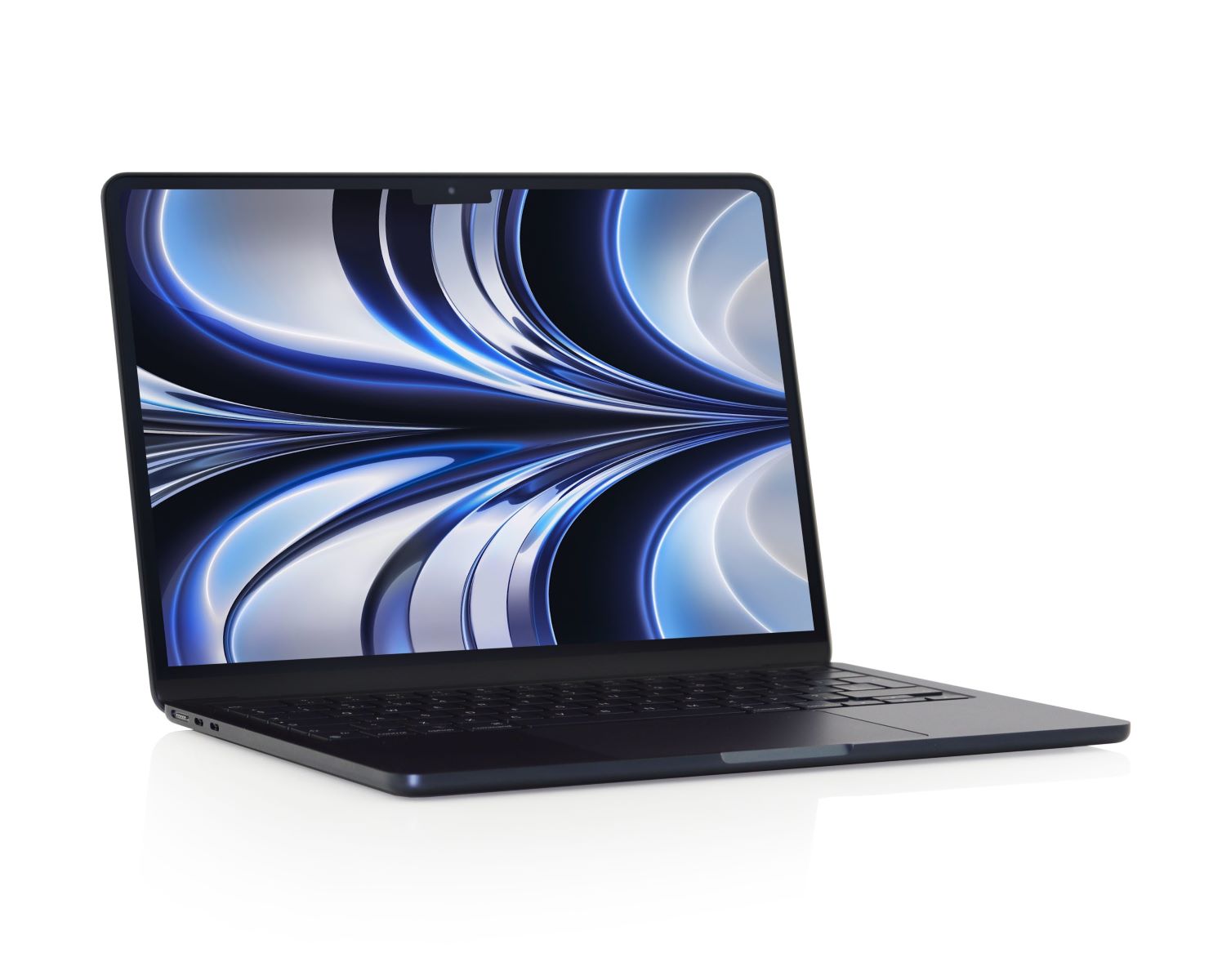Introduction
The Central Processing Unit (CPU) is considered the brain of a computer system, responsible for executing instructions and performing calculations. Over the years, CPUs have evolved significantly, improving their performance and capabilities. One important aspect of a CPU is its core count, which determines how many individual processing units it has. Each core is capable of executing instructions independently, thereby increasing the overall processing power of the CPU.
Understanding the concept of CPU cores is essential, as it directly affects a system’s performance and multitasking capabilities. In this article, we will delve into the different types of CPU cores and their significance in today’s computing landscape.
It’s important to note that the number of CPU cores is not the sole factor determining a processor’s performance. Other factors such as clock speed, cache size, and architecture also play significant roles. However, CPU cores are recognized as a key component when considering the overall performance of a processor.
Over the years, CPU manufacturers have strived to increase the number of cores present in their processors to meet the growing demands of modern computing. From single-core CPUs to multi-core CPUs, the progression has been substantial. Let’s now explore the various types of CPU cores and their implications.
What are CPU cores?
CPU cores are independent processing units within a central processing unit (CPU) that are responsible for executing instructions and performing calculations. They can be thought of as individual “brains” that work together to handle different tasks simultaneously. Each core within a CPU operates independently, allowing for parallel processing and improved overall performance.
Think of it this way: if a CPU is the main “engine” of a computer, then the cores are the individual cylinders within that engine. The more cylinders (or cores) a CPU has, the more power it has to handle multiple tasks efficiently and quickly.
In the early years of computing, CPUs typically had a single core, meaning they could only handle one task at a time. However, as technology advanced and the demand for more powerful machines grew, CPU manufacturers started to develop multi-core processors.
A multi-core CPU has two or more cores, allowing it to handle multiple tasks simultaneously. This means that each core can work on a separate task independently, which leads to faster and more efficient processing. For example, while one core is running a complex algorithm, another core can handle background tasks or execute a different program, resulting in smoother multitasking experiences.
It is essential to understand that CPU cores do not work entirely independently from each other. They still rely on other components, such as cache memory and the system bus, to exchange data and coordinate their operations. Nevertheless, the presence of multiple cores significantly enhances a CPU’s processing capabilities compared to a single-core processor.
The number of CPU cores that a user requires largely depends on their specific computing needs. For casual users who primarily use their computers for web browsing, word processing, or basic multimedia consumption, a dual-core or quad-core processor is usually sufficient. However, for more demanding tasks like video editing, graphics rendering, scientific simulations, or gaming, processors with six or more cores may be necessary to provide optimal performance and responsiveness.
It’s worth noting that not all software is optimized to take full advantage of multiple CPU cores. Some applications may only utilize a single core, which means that even if you have a multi-core CPU, certain tasks may not see a significant performance improvement. However, many modern software programs and operating systems have been developed to harness the power of multi-core processors, making the investment in a multi-core CPU worthwhile.
In the next sections, we will explore the different types of multi-core CPUs, from dual-core to octa-core and beyond, discussing their advantages and the potential performance gains they offer for various tasks.
Single core CPUs
In the early days of computing, CPUs were primarily single-core processors. A single core CPU consists of a single processing unit that handles all tasks and calculations. It sequentially executes instructions, one after another, resulting in a serial processing approach.
While single core CPUs may lack the parallel processing capabilities of their multi-core counterparts, they can still perform many tasks effectively. They are suitable for basic computing needs such as web browsing, document processing, and multimedia playback.
However, single core CPUs often struggle with resource-intensive tasks that require simultaneous processing. For example, rendering complex 3D graphics or running computationally intensive scientific simulations can be a slow and time-consuming process on a single core CPU.
Despite these limitations, single core CPUs are still found in embedded systems, older computers, and budget-friendly devices that don’t require high-performance computing. They are also commonly used in specific applications where parallel processing is not essential.
It’s important to note that software developers have made efforts to optimize applications to work efficiently with single core CPUs. Single-threaded programs, which rely on a single processing thread, can still provide satisfactory performance on these processors.
Overall, single core CPUs may be sufficient for basic tasks and older systems. However, as technology advances and software becomes more demanding, multi-core CPUs have become the norm for most computing devices, offering increased performance and better multitasking capabilities.
Dual-core CPUs
Dual-core CPUs take a significant step forward from single-core processors by incorporating two independent processing units, or cores, into a single chip. These cores operate simultaneously, allowing for improved multitasking and increased performance compared to single core CPUs.
The dual-core architecture enables the CPU to handle multiple tasks simultaneously, with each core dedicated to executing different instructions. This means that while one core is busy processing a task, the other core can take on additional tasks, resulting in faster and more efficient processing overall.
Dual-core CPUs offer several advantages over single core processors. They are better equipped to handle multitasking scenarios, allowing users to run multiple applications simultaneously without significant slowdowns. For example, you can smoothly multitask between browsing the web, streaming media, and working on a document using a dual-core CPU.
Additionally, dual-core CPUs provide improved performance in software applications that are designed to take advantage of multiple cores. Tasks such as video editing, encoding, and 3D rendering can see a noticeable boost in processing speed with a dual-core CPU compared to a single core solution.
However, it’s important to note that not all software can fully harness the benefits of dual-core processors. Some applications are still primarily single-threaded, meaning they only utilize a single core. In these scenarios, a dual-core CPU may not provide a significant performance advantage. Nevertheless, as multi-threaded applications become increasingly prevalent and software developers optimize their programs to utilize multiple cores, the advantages of dual-core CPUs will become more apparent.
Another benefit of dual-core CPUs is their energy efficiency. With two cores sharing the workload, each core can operate at a lower clock speed, resulting in reduced power consumption and heat generation. This energy efficiency is particularly advantageous in mobile devices, where battery life is a crucial consideration.
Overall, dual-core CPUs strike a balance between performance and affordability, making them suitable for most desktop and laptop applications. They provide a substantial performance improvement over single core CPUs, especially in multitasking scenarios and applications that are optimized for multiple cores.
Quad-core CPUs
Quad-core CPUs represent a significant advancement in processing power with the incorporation of four independent processing units, or cores, on a single chip. This increased core count enables quad-core CPUs to handle even more demanding tasks and applications with greater efficiency and speed compared to dual-core processors.
The use of four cores allows for even better multitasking capabilities, as each core can work on separate tasks simultaneously. This is particularly beneficial for power users and professionals who perform resource-intensive tasks such as video editing, 3D modeling, and software development. With a quad-core CPU, these tasks can be executed much faster and more efficiently than on a dual-core or single-core processor.
Quad-core CPUs also excel in scenarios where multiple software applications are running simultaneously. For example, gamers can experience smoother gameplay while running background tasks such as streaming, voice chat, or video recording without sacrificing performance. Additionally, professionals who use software suites that rely on parallel processing, such as graphic designers and animators, can benefit from the increased core count offered by quad-core CPUs.
Furthermore, quad-core processors provide improved performance in multi-threaded applications that are specifically optimized for multiple cores. These applications can efficiently distribute workloads across all four cores, resulting in faster processing times and enhanced productivity.
It’s worth noting that not all tasks and applications can fully utilize all four cores of a quad-core CPU. Some software applications are still primarily single-threaded or are not designed to take full advantage of multiple cores. However, the growing trend towards multi-threaded programming and software optimization means that quad-core processors are becoming increasingly valuable in the modern computing landscape.
Similar to dual-core CPUs, quad-core processors offer energy efficiency benefits. By distributing the workload across four cores, each core can operate at lower clock speeds, resulting in reduced power consumption and heat generation. This is particularly advantageous in mobile devices, where battery life and thermal management are key considerations.
Overall, quad-core CPUs provide a significant boost in processing power and performance, making them ideal for power users, professionals, and individuals who engage in demanding tasks and multitasking scenarios. Their four cores enable efficient parallel processing, faster application execution, and smoother multitasking experiences, enhancing productivity and user experience.
Hexa-core CPUs
Hexa-core CPUs, also known as six-core processors, represent a further advancement in processing power with the inclusion of six independent processing units, or cores, within a single chip. This increased core count provides even greater computing capabilities, making hexa-core CPUs well-suited for demanding tasks and resource-intensive applications.
The addition of two extra cores compared to quad-core processors enables hexa-core CPUs to handle more complex computations and multitasking scenarios with enhanced efficiency. The extra cores allow for even greater parallel processing, allowing users to run multiple applications simultaneously without experiencing significant performance bottlenecks.
Hexa-core CPUs excel in scenarios that require extensive multitasking and processing capabilities. Professionals working in fields like video editing, 3D rendering, and scientific simulations can greatly benefit from the increased core count. These tasks typically involve complex calculations and real-time rendering, and the additional cores ensure that the CPU is capable of managing these tasks without sacrificing performance or responsiveness.
Additionally, hexa-core processors offer improved performance in multi-threaded applications that are specifically optimized for multiple cores. Tasks such as software compiling, data analysis, and virtualization can see significant performance gains with a hexa-core CPU.
While not all software applications are fully optimized to utilize all six cores, the ongoing trend towards multi-threaded programming and software optimization means that hexa-core CPUs are becoming increasingly valuable. As more applications are developed to take advantage of the additional cores, users can experience enhanced performance and productivity.
Hexa-core CPUs also offer energy efficiency benefits, similar to dual-core and quad-core processors. By distributing the workload across multiple cores, each core can operate at lower clock speeds, resulting in reduced power consumption and heat generation. This is particularly beneficial for laptops and mobile devices where battery life and thermal management are essential considerations.
In summary, hexa-core CPUs provide a significant boost in processing power, making them ideal for users who engage in demanding tasks and require exceptional multitasking capabilities. With six independent cores, hexa-core processors offer efficient parallel processing, increased performance in multi-threaded applications, and the ability to handle complex computations with ease.
Octa-core CPUs
Octa-core CPUs, as the name suggests, feature eight independent processing units, or cores, within a single chip. This increased core count provides even greater processing power and multitasking capabilities compared to hexa-core and lower core count processors, making octa-core CPUs ideal for handling intensive workloads and demanding applications.
With eight cores, octa-core CPUs excel in scenarios that require extensive multitasking and parallel processing. They can handle resource-intensive tasks such as high-end gaming, video editing, 3D modeling, and virtualization with ease. The multiple cores allow the CPU to distribute the workload efficiently, ensuring smooth performance and responsiveness even under heavy workloads.
Octa-core processors are especially advantageous for power users and professionals who rely on complex software and multitasking extensively. For example, content creators who work with multiple applications simultaneously, such as video editing software, graphic design tools, and 3D rendering programs, will benefit from the increased core count and parallel processing capabilities offered by octa-core CPUs.
In addition to improved multitasking, octa-core CPUs also provide increased performance in software optimized for multiple cores. Multi-threaded applications that can utilize all eight cores can experience significant performance gains, allowing for faster rendering, quicker data processing, and shorter rendering times.
While not all software is fully optimized to take advantage of octa-core CPUs, the ongoing trend is towards multi-threaded programming and software optimization. As more applications are developed to harness the benefits of octa-core processing, users will continue to see further performance improvements and productivity gains with these processors.
It’s also worth noting that octa-core CPUs offer energy efficiency benefits by distributing the workload across multiple cores. Each core can operate at lower clock speeds, resulting in reduced power consumption and lower heat generation. This energy efficiency is particularly valuable in mobile devices, where extended battery life and heat management are essential considerations.
In summary, octa-core CPUs provide a significant increase in processing power and multitasking capabilities, making them ideal for power users, professionals, and individuals who engage in resource-intensive tasks. With eight independent cores, octa-core processors offer efficient parallel processing, improved performance in multi-threaded applications, and the ability to handle complex workloads with ease.
Deca-core CPUs
Deca-core CPUs, also known as ten-core processors, represent the pinnacle of processing power with the inclusion of ten independent processing units, or cores, within a single chip. This increased core count provides unparalleled performance and multitasking capabilities, making deca-core CPUs the top choice for handling the most demanding and resource-intensive tasks.
With ten cores, deca-core CPUs excel in scenarios that require extensive multitasking, parallel processing, and raw computational power. They can easily handle tasks such as high-end gaming, 3D rendering, complex simulations, and professional video editing with remarkable speed and efficiency. The multitude of cores allows for efficient distribution of workload, ensuring smooth performance even during demanding workloads.
Deca-core processors are particularly beneficial for professionals and enthusiasts who work with complex software and require exceptional multitasking capabilities. Professionals in fields such as computer-aided design (CAD), data analysis, and software development can greatly benefit from the high core count offered by deca-core CPUs. These CPUs allow for the simultaneous execution of multiple resource-intensive tasks, resulting in faster rendering, quicker analysis, and improved overall productivity.
In addition to superior multitasking, deca-core CPUs provide exceptional performance in applications that are optimized to take advantage of multiple cores. Multi-threaded applications that can effectively utilize all ten cores will experience substantial performance gains, allowing for quicker execution of tasks and faster completion of time-consuming processes.
It’s important to note that not all software applications are fully optimized to utilize all ten cores of a deca-core CPU. However, the ongoing trend towards multi-threaded programming and software optimization means that more applications are being developed to harness the benefits of deca-core processing.
Furthermore, deca-core CPUs offer energy efficiency advantages, similar to processors with lower core counts. By distributing the workload across multiple cores, each core can operate at lower clock speeds, reducing power consumption and heat generation. This energy efficiency is particularly valuable in laptops and mobile devices, where battery life and thermal management are crucial considerations.
In summary, deca-core CPUs deliver unrivaled performance, making them ideal for professionals and enthusiasts who engage in the most demanding tasks and require exceptional multitasking capabilities. With ten independent cores, deca-core processors offer unmatched parallel processing, increased performance in multi-threaded applications, and the ability to handle the most complex workloads with ease.
Advantages of Multi-core CPUs
Multi-core CPUs offer several advantages over single-core processors, making them a popular choice in modern computing. These advantages stem from their ability to execute multiple tasks simultaneously, thanks to the presence of multiple independent processing units, or cores, within a single chip.
1. Enhanced Performance: Multi-core CPUs provide increased processing power, allowing for faster and more efficient task execution. With multiple cores working in parallel, the CPU can handle resource-intensive tasks more effectively, resulting in improved overall performance.
2. Efficient Multitasking: Multi-core CPUs excel at multitasking, enabling users to run multiple applications simultaneously without significant performance degradation. Each core can handle a separate task, allowing for smoother multitasking experiences and better user efficiency.
3. Improved Responsiveness: With multiple cores, multi-core CPUs offer improved system responsiveness. Tasks requiring real-time processing, such as multimedia playback and gaming, can be executed smoothly while simultaneously running background processes.
4. Parallel Processing: Multi-core CPUs excel at parallel processing, where multiple cores can work on different parts of a task simultaneously. This is particularly advantageous in scenarios that involve complex calculations, simulations, and data analysis, as it allows for faster results and improved efficiency.
5. Scalability: Multi-core CPUs offer scalability, as the number of cores can be increased to meet growing computational needs. This allows for future-proofing systems and accommodating evolving software and technology requirements without needing to replace the entire processor.
6. Energy Efficiency: While multi-core CPUs have increased processing power, they can still operate at lower clock speeds compared to single-core processors. This results in reduced power consumption and heat generation, contributing to improved energy efficiency and longer battery life in mobile devices.
7. Software Optimization: Modern software developers are increasingly optimizing their applications to take advantage of multiple cores. As a result, multi-core CPUs can benefit from improved software performance and efficiency, as more applications are designed to distribute workloads across multiple cores.
In summary, multi-core CPUs offer enhanced performance, efficient multitasking, improved responsiveness, and the ability to handle complex tasks with ease. With their scalability, energy efficiency, and increasing software optimization, multi-core CPUs are the go-to choice for users who demand high-performance computing and the ability to multitask efficiently.
How many cores do you need?
Determining the optimal number of CPU cores depends on your specific computing needs and the tasks you frequently perform. While more cores generally mean better performance, it’s important to strike a balance between cost, power consumption, and the requirements of your applications. Here are some factors to consider when deciding how many CPU cores you need:
1. Basic Usage: For casual web browsing, email, and word processing, a dual-core or quad-core CPU is usually sufficient. These processors offer smooth performance for everyday tasks without breaking the bank.
2. Multimedia and Gaming: If you regularly work with multimedia files, such as editing videos or manipulating high-resolution images, a quad-core or hexa-core CPU can provide significant performance benefits. Gamers can also benefit from higher core counts, especially in multiplayer games and those that require extensive graphics processing.
3. Professional Applications: Professionals who rely on resource-intensive applications such as video editing software, 3D rendering programs, or complex simulations benefit from CPUs with higher core counts. Hexa-core, octa-core, or even deca-core processors offer the necessary processing power to handle these demanding tasks efficiently.
4. Multi-threaded Applications: Consider the software applications you use regularly. If they are optimized for multi-threading and capable of utilizing multiple cores effectively, then having more cores can significantly improve their performance. Look for benchmarks and recommendations specific to the applications you rely on to help guide your core count decision.
5. Budget Considerations: It’s important to weigh the performance benefits against the cost of the CPU. Higher core count processors tend to come at a premium price. Evaluate how much performance you truly need for your specific tasks and choose a CPU that strikes a balance between performance and cost.
6. Future Proofing: If you plan to keep your system for an extended period, it may be worth considering a CPU with more cores to ensure compatibility with future software applications and technologies. This allows for better scalability and longevity of your system without requiring an immediate upgrade.
Keep in mind that the number of CPU cores is not the only factor that determines performance. Clock speed, cache size, and architecture also play important roles. For example, a higher clock speed and larger cache can compensate for a lower core count in certain situations.
In summary, the number of CPU cores you need depends on your specific requirements, the nature of your tasks, and your budget. Dual-core or quad-core CPUs are suitable for basic usage, while hexa-core, octa-core, and deca-core processors offer superior performance for multimedia, gaming, and professional applications. Consider the software you use, budget constraints, and future-proofing requirements to make an informed decision about the optimal number of CPU cores for your needs.
Conclusion
In conclusion, the number of CPU cores plays a crucial role in determining the performance and multitasking capabilities of a processor. From single-core CPUs to multi-core CPUs with higher core counts, technological advancements have brought about significant improvements in processing power.
Single core CPUs, while limited in their parallel processing capabilities, are still suitable for basic computing tasks and older systems. However, as technology has progressed, multi-core CPUs have become the norm, offering enhanced performance and efficiency.
Dual-core CPUs introduce the concept of parallel processing, allowing for smoother multitasking experiences and improved performance in multi-threaded applications. Quad-core CPUs take this a step further and provide even greater multitasking capabilities, making them suitable for power users and professionals who engage in resource-intensive tasks.
Hexa-core CPUs, octa-core CPUs, and deca-core CPUs continue to push the boundaries of processing power, catering to the needs of professionals and enthusiasts who require exceptional multitasking capabilities and high-performance computing.
Ultimately, selecting the right number of CPU cores depends on your specific computing needs, the tasks you frequently perform, and your budget considerations. It’s important to strike a balance between cost, power consumption, and the requirements of your applications.
As software developers continue to optimize their applications for multi-threaded processing, the benefits of CPUs with higher core counts will become more apparent. It’s also crucial to consider factors such as clock speed, cache size, and architecture when evaluating the overall performance of a CPU.
Whether you are a casual user, professional, or power user, understanding the significance of CPU cores can help you make informed decisions when selecting a processor that best suits your needs, providing you with optimal performance and multitasking capabilities.







